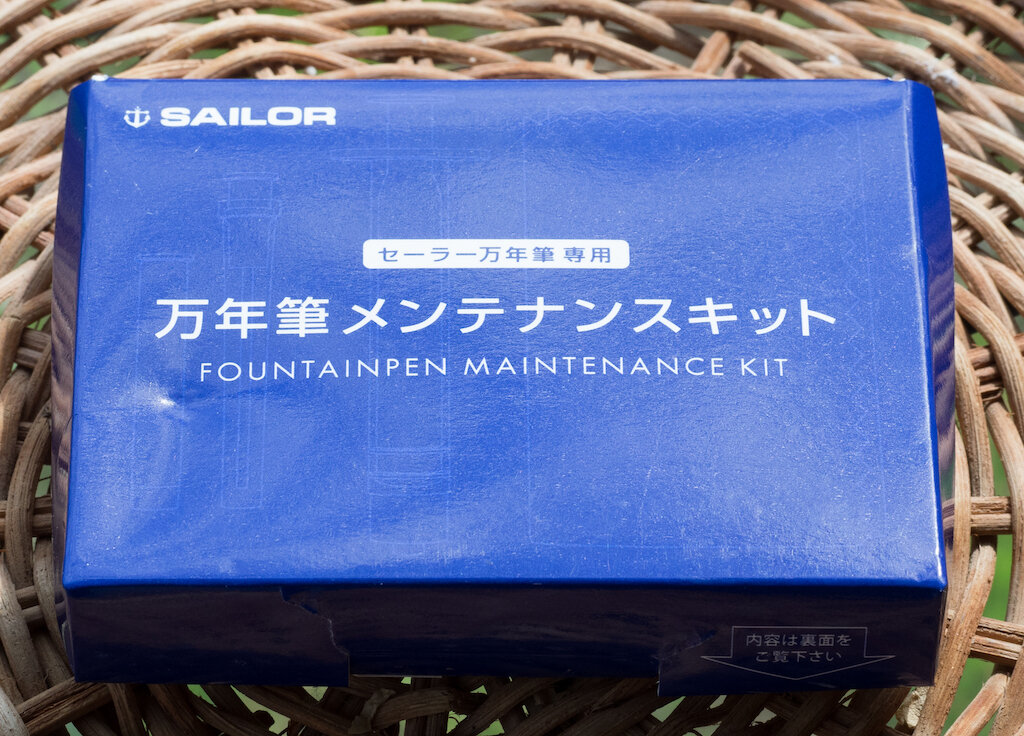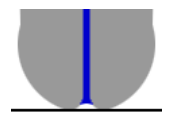(Susan M. Pigott is a fountain pen collector, pen and paperholic, photographer, and professor. You can find more from Susan on her blog Scribalishess.)
The Sailor Fountain Pen Maintenance Kit arrives in a small blue cardboard box. Inside are a 3ml plastic syringe with two attachments: a blunt metal syringe pipette and a plastic nozzle attachment for cleaning. In addition there’s a soft cleaning cloth.
The attachments serve two different purposes. The metal syringe pipette is used for drawing up ink from near-empty bottles. You simply screw the pipette onto the syringe and stick the unit into the ink bottle.
The syringe pulls a full 3ml of ink into the syringe. You can use this to fill your converter or an empty, clean cartridge (just be careful not to press the syringe too hard or too quickly or you’ll have a mess on your hands).
The cleaning nozzle also attaches to the syringe. After rinsing your nib unit thoroughly, fill the syringe with clean water.
Insert the nozzle into your nib unit and press gently. The water will flow through the nib unit and clean out any remaining ink.
Although you can use a baby nasal aspirator (what I call a “nose sucker”), you don’t have as much control over the flow of water through your nib. The syringe/nozzle unit works much better because it allows you to apply gentle pressure.
The cleaning cloth is just a simple, soft cloth for wiping your barrel or mopping up leftover water.
Keep in mind that the Sailor Maintenance Kit is intended only for Sailor or Nagasawa brand pens. Although you can certainly use the metal syringe with any ink bottle and cartridge/converter, the cleaning nozzle is made to fit Sailor nib units only.
You can purchase the Sailor Fountain Pen Maintenance Kit from JetPens for $16.00, which seems a bit expensive to me. You can purchase ink syringes with metal pipettes pretty inexpensively from other retailers. However, if you have a large Sailor collection, this kit might be worth the cost since it comes with a nozzle sized specifically to clean Sailor nibs.
(JetPens provided this product at no charge to The Pen Addict for review purposes.)
Enjoy reading The Pen Addict? Then consider becoming a member to receive additional weekly content, giveaways, and discounts in The Pen Addict shop. Plus, you support me and the site directly, for which I am very grateful.
Membership starts at just $5/month, with a discounted annual option available. To find out more about membership click here and join us!






































